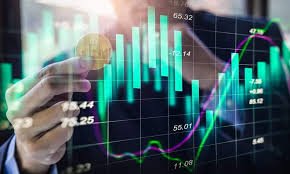Trading1
Understanding Trading Crypto Volume An In-Depth Guide

Understanding Trading Crypto Volume: An In-Depth Guide
In the world of cryptocurrency trading, one term that often surfaces is “trading crypto volume”.
This term refers to the total amount of a specific cryptocurrency that has been bought and sold within a particular timeframe. One must grasp the significance of trading volume to understand market dynamics fully. For new and experienced traders alike, volume serves as an essential indicator of market activity and liquidity. To further understand this crucial metric, refer to this helpful resource: Trading Crypto Volume https://kitsunez.pages.dev/12/bFodCqcOiA.
What is Trading Volume?
Trading volume reflects the number of assets traded over a specific period, typically measured in 24 hours for cryptocurrencies. It helps investors gauge the strength behind price movements. High trading volume suggests strong interest in a cryptocurrency, whether bullish or bearish. Conversely, low trading volume may indicate a lack of interest among traders, contributing to price stagnation.
Why is Trading Volume Important?
1. Liquidity: Volume is a critical component of a market’s liquidity. High volume means a trader can buy or sell a cryptocurrency without causing a significant impact on its price. Low volume can lead to price manipulation and increased volatility.
2. Market Sentiment: Analyzing trading volume, along with price trends, can help traders better understand market sentiment. If prices are rising alongside high volume, it suggests strong buying interest. Conversely, if prices rise but volume declines, it may indicate a lack of conviction in the bullish trend.
3. Determining Trends: Volume analysis is crucial for identifying potential market trends. For instance, if a currency is trending upwards but experiences increased volume during its rise, this reinforces the bullish trend’s validity.
How to Analyze Trading Volume

To effectively analyze trading volume and leverage it in your trading strategy, consider the following methods:
1. Volume Indicators
There are various indicators traders use to analyze volume effectively:
- On-Balance Volume (OBV): This indicator adds volume on up days and subtracts it on down days, helping traders assess the overall buying and selling pressure.
- Volume Moving Average: By calculating a moving average of volume over a specified period, traders can smooth out volume fluctuations and identify significant changes over time.
- Accumulation/Distribution Line: This indicator considers both price and volume to determine the cumulative flow of money in and out of an asset.
2. Volume Patterns
Pay attention to patterns, such as:
- Volume Spikes: A sudden increase in volume may indicate a significant shift in market sentiment and often heralds a price breakout or breakdown.
- Volume Divergence: When price moves up or down while volume moves in the opposite direction, it may signal a potential reversal in the ongoing trend.
Combining Volume with Other Indicators
Volume should not be analyzed in isolation but rather combined with other technical indicators for a holistic view of market conditions. It is crucial to tie volume data to price action indicators such as moving averages, Relative Strength Index (RSI), or Bollinger Bands to develop a robust trading strategy.
Understanding Volume in Different Market Conditions
The significance of trading volume often varies depending on the market condition:

1. Bull Markets
During a bull market, traders should look for rising prices accompanied by increasing volume, affirming a strong bullish environment. A healthy bull market will show high volume spikes, particularly during price breakouts.
2. Bear Markets
In bear markets, declining prices often come with increasing volume, indicating strong selling pressure. New traders should be cautious, as high volume signals a potential continuation of downward trends.
3. Sideways Markets
When the market trades sideways, volume tends to be lower. However, a sudden increase in volume can be a precursor to a breakout in either direction.
Common Mistakes to Avoid
While analyzing trading volume, traders often fall into common traps:
- Ignoring Volume: Volume can inform trading strategies significantly. Ignoring it may lead to misguided trades.
- Overemphasis on Volume Alone: While important, volume should be considered alongside other indicators to confirm trends.
- Single Timeframe Analysis: Relying on volume from one timeframe can be misleading. Analyze volume across multiple timeframes for a complete picture.
Final Thoughts
Understanding trading crypto volume is vital for any cryptocurrency trader. It is more than just a number; it reflects market sentiment, liquidity, and the strength of price movements. By effectively analyzing volume and integrating it into your trading strategies, you can enhance your ability to make informed and successful trading decisions. As you delve deeper into the intricate world of crypto trading, always remember to evaluate trading volume in conjunction with various market indicators to position yourself advantageously in this volatile landscape.
